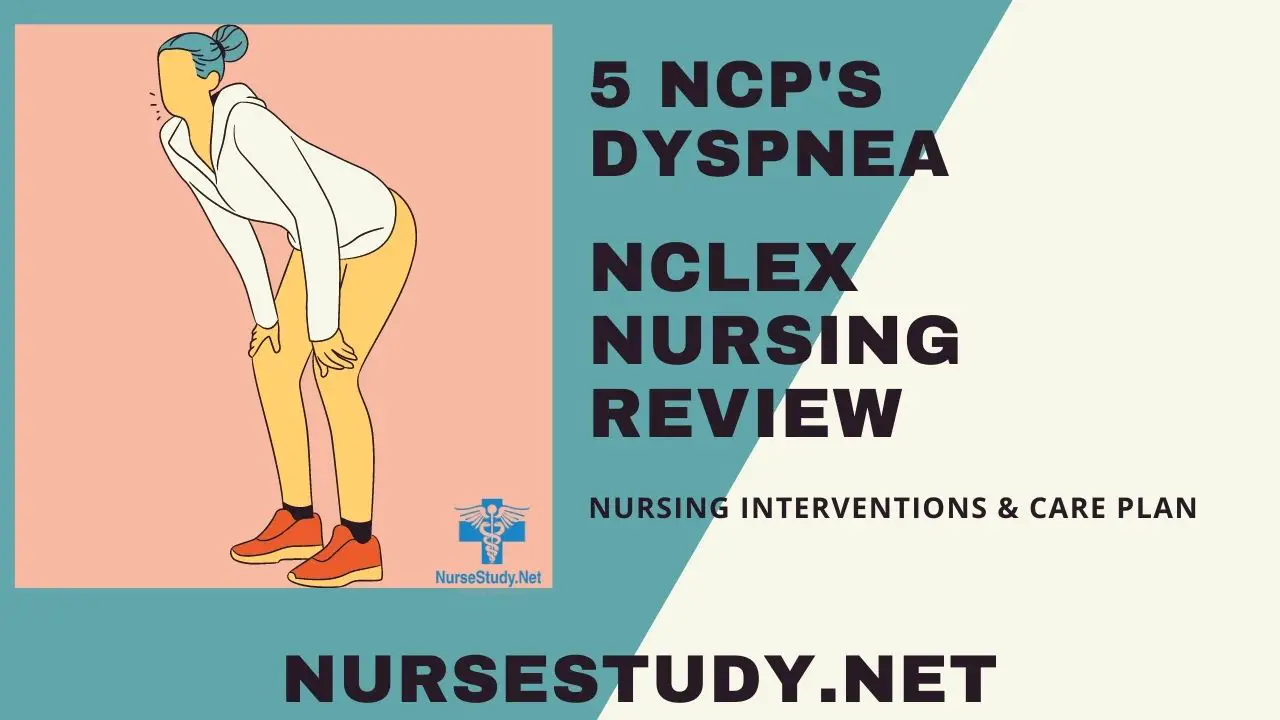

Dyspnea NCLEX Review and Nursing Care Plans
Respiration is considered as one of the primary vital signs that are monitored by the healthcare providers for their patients. Out of all the vital functions in the body, respiration is unique because its regulation is not only led by automatic centers at the brainstem but also from voluntary signals coming from the cortex.
Untoward instances encountered in the control of respirations, the ventilator pump, or gas exchange mechanism will result to an uncomfortable breathing also known as Dyspnea. Although the initial goal is to remedy the physiologic disturbances (e.g., gas exchange), addressing chronic cardiopulmonary disorders also plays a role for better management and monitoring of patients with dyspnea.
The causes and risk factors of dyspnea revolve around the following encountered problems on the mechanisms of breathing:
Some conditions that may cause long-term dyspnea are mentioned below:
Complications of dyspnea coincide with the worsening of the underlying condition. Some of the associated complications are as follows:
Diagnosing dyspnea involves recognizing the issues of the respiratory system and the underlying causes attributed to the condition. This can be initially assessed through a complete medical history and physical examination. However, the assessments and tests mentioned below will further aid in the initial confirmation of dyspnea.
The goal of treatment for dyspnea is the control of the pathological mechanisms that relate to the condition.
The different treatment options for dyspnea revolve around treating the underlying condition with a combination of supplemental, pharmacological, and medical regimens.
These treatments either address the various pathological mechanisms that are present in dyspnea. The treatment options are:
Dyspnea Nursing Diagnosis: Ineffective Breathing Pattern related to underlying condition as evidenced by abnormal breathing rate, rhythm and depth, and the use of respiratory accessory muscles.
Desired Outcome: Patient will maintain an effective breathing pattern as shown by normal and relaxed breathing and absence of dyspnea.
Dyspnea Nursing Diagnosis: Ineffective Airway Clearance related to the increased production of secretions as evidenced by abnormal breath sounds and inability to clear airway secretions.
Desired Outcome: The patient will maintain clear airways as shown by normal breath sounds and enhanced removal of secretions.
Dyspnea Nursing Diagnosis: Impaired Gas Exchange related to hypoventilation and altered oxygen carrying-capacity of the blood as evidenced by abnormal arterial blood gases, altered mental state, and delayed capillary refill of nail beds.
Desired Outcome: Patient maintains optimal gas exchange as shown by arterial blood gases within normal range, recommencement of usual mental status and capillary refill within 2-3 seconds.
Dyspnea Nursing Diagnosis: Risk for decreased Cardiac Output related to increased pulmonary blood pressure, as evidenced by irregular heartbeat, heart rate of 122, dyspnea upon exertion, leg edema, and fatigue
Desired outcome: The patient will be able to maintain adequate cardiac output.
Dyspnea Nursing Diagnosis: Activity intolerance related to imbalance between oxygen supply and demand as evidenced by fatigue, overwhelming lack of energy, verbalization of tiredness, generalized weakness, and shortness of breath upon exertion
Desired Outcome: The patient will demonstration active participation in necessary and desired activities and demonstrate increase in activity levels.
Ackley, B. J., Ladwig, G. B., Makic, M. B., Martinez-Kratz, M. R., & Zanotti, M. (2020). Nursing diagnoses handbook: An evidence-based guide to planning care. St. Louis, MO: Elsevier. Buy on Amazon
Gulanick, M., & Myers, J. L. (2022). Nursing care plans: Diagnoses, interventions, & outcomes. St. Louis, MO: Elsevier. Buy on Amazon
Ignatavicius, D. D., Workman, M. L., Rebar, C. R., & Heimgartner, N. M. (2018). Medical-surgical nursing: Concepts for interprofessional collaborative care. St. Louis, MO: Elsevier. Buy on Amazon
Silvestri, L. A. (2020). Saunders comprehensive review for the NCLEX-RN examination. St. Louis, MO: Elsevier. Buy on Amazon
Please follow your facilities guidelines, policies, and procedures.
The medical information on this site is provided as an information resource only and is not to be used or relied on for any diagnostic or treatment purposes.
This information is intended to be nursing education and should not be used as a substitute for professional diagnosis and treatment.
Anna Curran. RN-BC, BSN, PHN, CMSRN I am a Critical Care ER nurse. I have been in this field for over 30 years. I also began teaching BSN and LVN students and found that by writing additional study guides helped their knowledge base, especially when it was time to take the NCLEX examinations.